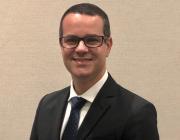Survival of composite restorations after selective or total caries removal in primary teeth and predictors of failures: A 36-months randomized controlled trial
- Citation:
- Liberman, J, Franzon R, Guimaraes LF, Casagrande L, Haas AN, Araujo FB. 2020. Survival of composite restorations after selective or total caries removal in primary teeth and predictors of failures: A 36-months randomized controlled trial, Feb. J Dent. 93:103268.
Abstract:
OBJECTIVES: The aim of this study was to assess the survival of composite restorations after selective (SCR) or total caries removal (TCR) and determine predictors of failures after 36 months. METHODS: 120 teeth with deep occlusal or occlusal-proximal carious lesions were randomly divided into control (TCR; n = 54; 69% Class II) and test (SCR; n = 66; 63% Class II) groups. Clinical evaluation was applied using the USPHS criteria, and the presence of Charlie or Delta scores at the marginal integrity were considered as a failure. RESULTS: The overall survival rate of restorations was 68% after 36 months, 81% for TCR and 57% for SCR (p = 0.004). The multivariable Cox Regression model demonstrated that restorations performed after SCR had 3.44 times greater probability of failure compared to TCR (p = 0.006). The other two predictors for failure of restorations were teeth with Class II cavities (hazard ratio = 3.3) and children with gingival bleeding over 20% (hazard ratio = 2.5). CONCLUSIONS: Performing composite restorations after SCR in primary teeth had success rate significantly lower than restorations performed after TCR. Complex cavities and worst patient s oral hygiene were found to be predictors of failure of restorations. CLINICAL SIGNIFICANCE: Although SCR has been demonstrating high rates of pulp preservation, clinicians should consider that composite restorations fail in a higher frequency compared to TCR in primary teeth and, in some circumstances, may be preferable in terms of restoration longevity.
Notes:
Liberman, JFranzon, RGuimaraes, L FCasagrande, LHaas, A NAraujo, F BengEnglandJ Dent. 2020 Feb;93:103268. doi: 10.1016/j.jdent.2019.103268. Epub 2019 Dec 24.
